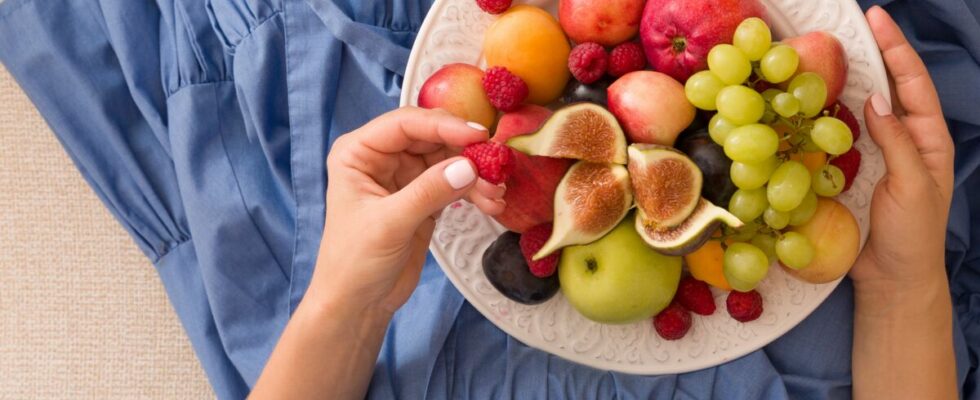Diabetes is a chronic disease defined by hyperglycemia, excess sugar in the blood. The diagnosis is made when the blood sugar level is greater than 1.26 g/l on an empty stomach, confirmed twice. “Type 2 diabetes is the most common form of diabetes. This disease associates a defect in insulin secretion with improper use of insulin by the body.”, explains Dr. Bouché. The occurrence of type 2 diabetes is linked to both genetic and environmental factors. “We can find a family predisposition but our lifestyle, our diet will mean that this disease will manifest itself or not, and more or less early in life.”, recalls the endocrinologist.
The latter specifies that type 2 diabetes is no less serious than type 1 diabetes, characterized by a lack of insulin secretion by the body and which often occurs earlier in life. “Severity is not linked to the type of diabetes, nor to the treatment, but to whether the disease is controlled or not and any associated cardiovascular risk factors.”, explains Dr. Bouché.
What is a sweet food?
“Rather than talking about sugar, we should talk about carbohydrate, which is the biochemical name for sugar”, recalls the endocrinologist. There are many misunderstandings about sugar. Carbohydrates can have different properties depending on how they are metabolized by our body or their effects on blood sugar levels. The question of sweet taste is also important, if a strawberry has a very sweet taste, for example it contains less sugar than white bread in percentage!
Also pay attention to the use of the terms simple/fast sugars (monosaccharides, sugar, fruits) and complex/slow sugars (bread starch). “In reality, the biochemical nature of carbohydrates does not reflect their biological effect. We should no longer use these terms and instead prefer to talk about the glycemic index”, explains Dr. Bouché. The glycemic index is a criterion for ranking foods containing carbohydrates, based on their effects on blood sugar levels. We distinguish between foods with low GI (less than 50), medium (between 35 and 50) and high GI (greater than 50). “A sugary food with a low GI is absorbed more slowly, blood sugar rises less high, but there is no shift in the glycemic peak.”, observes the specialist.
Carbohydrates, limit them without completely banning them
Sweet products (sugar, candy, sugary drinks, etc.) with a very high glycemic index are called “empty calories” by some dietitians. “They provide a lot of calories at once in a small quantity, are not satiating and are above all very hyperglycemic.”, explains Dr. Bouché. These sugars are of little nutritional benefit and must be consumed in limited quantities (10 to 15% of daily intake). A recommendation that applies to diabetic patients as well as the general population. The way they are consumed is also important, and it is best to avoid taking them in isolation. “For example, uA can of soda taken during a meal loses some of its hyperglycemic power because the food slows down its absorption”, observes the specialist.
As for cakes, pastries and desserts, they are often, in addition to being sweet, very rich in saturated fats. The latter promote cardiovascular disease, an already higher risk in diabetic people, are very high in calories and also increase insulin resistance. A glass of soda will raise blood sugar levels very quickly but over a short period, while a very fatty food will prevent insulin from acting over a longer period. “We must therefore be wary of desserts very high in fat and reduce saturated fats in the diet.”, recommends Dr. Bouché.
Favor low GI foods
As part of a balanced diet, and whether you are diabetic or not, the objective will be to favor foods with a low glycemic index. “IThey are more filling and often richer in fiber”, recalls the endocrinologist. The way these foods are prepared is also important. “We can take the example of wheat. White bread has a very high GI while pasta, for example, digests less quickly and has a lower GI. You can also lower the glycemic load of the meal by adding fiber, combining spinach with white rice for example.”, explains Dr. Bouché. People with diabetes are therefore advised to favor whole grainsmore filling and less hyperglycemic.
Type 2 diabetes: watch out for carbohydrates, but not only that!
If it is important to make this reminder about carbohydrates, Dr Bouché insists on the importance of also paying attention to your alcohol consumption when you are diabetic, due to the hypoglycemia that it can cause when taken. in excess. “Also be careful with salt consumption, which can promote hypertension.”, adds the specialist. Finally, to fight against insulin resistance, you must also practice physical activity regularly. A recommendation that applies, again, to everyone, diabetics or not.
Thanks to Dr. Clara Bouché, endocrinologist.
